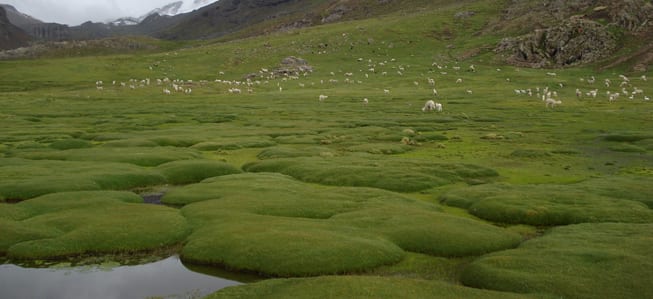The stems of cushion plants reabsorb nutrients from dead leaves by sending out lateral rootlets.
“Other plants deal with cold by packing their stems tightly together into a cushion. By doing so, the plant creates a miniature ecosystem where the resources of warmth, humidity and nourishment are significantly better than in the world outside it. The cushion’s furry exterior acts like a muff, helping to hold any warmth it might contain. The plant may even add to that by, on occasion, expending a little of its food reserves in slightly raising the internal temperature. The sheer bulk of fibres of the cushion retains water like a sponge and the fierce winds do not dry it out. Nor is the nutriment embodied in the leaves lost when they die. Instead of being shed, they remain within the cushion and the upper part of the stems puts out lateral rootlets to reabsorb much of the leaves’ constituents just as soon as decay releases them…No plants develop bigger cushions than those growing on the tops of the mountains in Tasmania. They have a particular need to do so. Snow seldom falls on these peaks because the surrounding sea keeps the climate relatively mild. But the sea does nothing to reduce the wind, and the chill it brings at these altitudes can be very bitter indeed. The plants in winter, lacking a protective blanket of snow, are thus subject to particularly severe chilling…The plants that form the cushions here belong to the same family as daisies and dandelions, but their flowers are tiny and their stems are packed tightly together. A single square yard may contain a hundred thousand shoots so that a big cushion could easily contain a million stems…Some cushions are twelve feet across and spill over boulders and around the boles of trees. They may contain several species intermingled so that their surface is spangled with different shades of green.” (Attenborough 1995:255)







